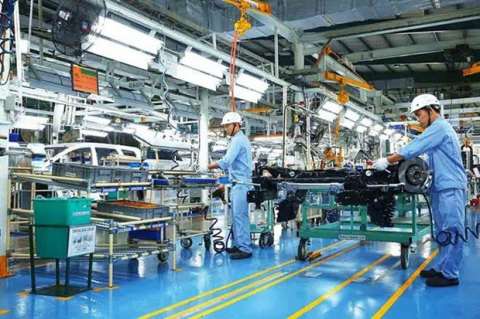Developing human resources for the IC design and manufacturing industry in Vietnam
Given the importance of the electronics and microchip industries in the context of the 4th Industrial Revolution (Industry 4.0), many preferential policies to attract investment and create many development opportunities for this industry have been issued.
However, developing and mastering technology and human resources is the decisive factor. This is also the opinion of many experts at the seminar: “Design and manufacture of microchips and strategies for developing human resources to support in Vietnam” recently organized by the University of Economics and Technology (Ministry of Industry and Trade) in Hanoi.
Design and manufacture of microchips – The role and status of human resources in Vietnam
According to experts, microchips are a very important field, the foundation for many other fields. The development of the rich and powerful countries in the world today all have an important contribution to the chip manufacturing industry. However, microchips require large human resources, highly qualified experts, and a long vision. In the current period, the 4.0 industrial revolution taking place firmly worldwide has been bringing great opportunities for Vietnam. What’s more, this revolution could also create an upheaval in the labor market when many people are at risk of losing their jobs because production processes are automated, as well as many industries tend to use intelligent robots instead of people. Therefore, building a human resource development strategy to orient and create high-quality human resources to meet the needs of the chip manufacturing market in Vietnam is an urgent and important task.
Statistics show that human resources for the IC design industry in Vietnam are unevenly distributed among provinces/cities and regions. Because of the lack of synchronous investment in technology and production lines, IC design companies in Vietnam act as a branch providing human resources for the research and development department of the parent company based abroad. Due to this feature, Vietnam has not yet formed a team with technical capabilities at the level of general engineer, capable of mastering a complete product…

Compared with developed countries, formal training in the field of microchips in Vietnam is still very limited. At some leading technical universities, the teaching only stops at the level of actively putting the basic knowledge of the field of microchips into the subjects such as electronic circuit engineering, digital circuit design, analog circuit design, and VLSI design… but there is no separate training in circuit design techniques. In some universities, although there are laboratories and specialized teachers for intensive research and training, the conditions for students to have the opportunity to participate in research and practice issues related to the field of microchips are still very modest…
Find the solution to the human resource problem
Assoc. Prof. Dr. Vo Thu Ha – Dean of the Faculty of Electrical Engineering (University of Economics – Industrial Engineering), said that the development phase of human resources for IC design in Vietnam started from 2005-2006 during the Internet boom era. Especially in recent years, the number of Vietnamese officials going abroad to work for companies in the top 15 of the world’s largest semiconductor chip companies has increased significantly. Currently, Vietnam has a team of skilled engineers with an average age of gold, and the average number of years of experience is about five years. This is a great advantage for Vietnam because this age group has the most creativity and contributes to the IC design and manufacturing industry. In the context of the increasing pressure of the global shortage of human resources, while Vietnam’s human resource level is more and more improving, Vietnamese experts are being sought after by companies in Singapore, Malaysia, Taiwan, Japan, Korea, etc. This is both a challenge and an opportunity for Vietnam to increase the number of human resources for designing and manufacturing microchips.
Sharing at the seminar, Mr. Nguyen Trung Ti – in charge of recruiting human resources (HCl Technologies), said that HCl is currently looking for talented people who can orient technology in the future. In the context of technology changing quickly, HCl constantly searches for candidates capable of logical thinking, leadership, and adapting to the working environment with a team of 159,000 employees working in 50 countries worldwide. However, the search for human resources, especially high-quality human resources in the design and manufacture field of micro chain faces many difficulties. Therefore, to develop resources to serve the needs in the future, HCl said that it is necessary to focus on the most public investment resources on training.
Agreeing with the above point of view, many experts say that it is necessary to have close cooperation between technical universities and the business community to ensure the source of graduates quickly participate in design projects or manufacturing stages at the enterprise. The universities in the engineering industry should consider opening micro chains in the training program to meet cooperation with domestic and foreign enterprises in the training and retraining of high-tech human resources.
Source: Vietnam Science and Technology Magazine

 EN
EN
 VI
VI



